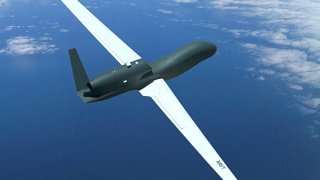
As an older generation of engineers plans its retirement, Northrop Grumman Corp. is developing a new source of talent in San Diego: community colleges.
The defense contractor is offering part-time work to students taking classes in the STEM disciplines — that is, science, technology, engineering and mathematics.
The $30 billion corporation already has programs to attract students in college, high school and even the early grades of elementary school. It employs about 180 university students in San Diego and has 32 high school juniors and seniors in specialized learning programs.
Seeking to fill a hole in its programming, Northrop Grumman invited four students from North County’s Palomar College and MiraCosta College to work at its Autonomous Design Center of Excellence in the fall. The community college students worked on aircraft programs such as Global Hawk and Fire Scout.
For the spring there will be eight students from the same colleges, as well as the San Diego Community College District.
The goal is to get more students qualified for jobs at the defense contractor.
Another goal is attracting and qualifying students from diverse backgrounds. In September, the Inclusive Steering Committee of the San Diego Regional Economic Development Corporation said the region has a particular need to develop the talents of its Latino community. Northrop Grumman is one of the businesses with representatives on the committee.
Local
A third goal is to put more local people in San Diego County jobs.
Both the students and the business benefit from the arrangement, said Alfredo Ramirez, the Northrop Grumman executive overseeing the new talent pipeline program.
Consider a student on the path to becoming a software developer: “We bring her in to support some of our systems integration activities in the lab. She becomes a lab technician, and increases her value by learning how to operate systems,” said Ramirez, who is vice president of engineering at Northrop Grumman. "It gives her a perspective. She’ll have a better affinity towards integrating hardware with the software that she will be building in years to come. I think it’s mutually beneficial — across the board, period, end."
Positions to Fill...
How many engineers does the company need? Ramirez wouldn’t say.
“It’s a healthy number,” he said. “The need won’t go away. In our industry we have a workforce that is pretty experienced. Many of us [are] reaching retirement age and then enjoying that time when we can punch out. Because of that very senior, experienced, talented workforce that we have, we have to be backfilling continuously, as [those existing employees] move into enjoying those retirement opportunities.”
Even if the economy was not growing as quickly as it is, the company would need more engineers, he said.
The U.S. Bureau of Labor Statistics counted 67,200 aerospace engineers in the United States in 2018, the latest year for which statistics are available. Job growth is expected to be 2% through 2028 — which is slower than average.
The U.S. had 1.37 million software developers in 2018.
The U.S. government expects job growth of 21% through 2018 — much faster than the average for all occupations.
Both are good paying jobs. The median income for an aerospace engineer is $115,000 per year and the median income for a software developer is $106,000 per year. For community college students from underrepresented backgrounds, such work could be a ticket to a middle-class life.
Engineering the Unmanned Fleet
Located in Rancho Bernardo, Northrop Grumman’s Autonomous Design Center of Excellence works on a number of high-end unmanned systems. They include the Global Hawk and Triton aircraft, which fly at very high altitudes and collect intelligence for the U.S. Air Force, U.S. Navy and certain foreign military services.
There is also Fire Scout, an unmanned helicopter that will fly off the Navy’s Littoral Combat Ship, extending the reach of the ship’s crew. Fire Scout can do work in tandem with manned helicopters; it can collect intelligence and will soon be fitted to deliver weapons.
None of the aircraft are built here, but San Diego is home base for engineering and programming.
In addition, Northrop Grumman is designing the B-21 Raider bomber, a stealth aircraft that is expected to fly later in the 2020s. The defense contractor says little about the project, but it is rumored to have an unmanned component.
From the Marines to Global Hawk
The talent pipeline program puts community college students to work as part-time engineering assistants and technicians. They gain experience in systems integration and test, software engineering and electronics and payloads.
Matthew Sheehan was one of the four students in the initial program in the fall. He is a MiraCosta student who plans to finish a computer science degree at San Diego State University.
Sheehan described his job on Northrop Grumman’s Global Hawk aircraft as systems integration work: making sure “software meets hardware the ways it’s supposed to.”
He said the experience in industry gave him valuable insight into how testing works.
Now that the fall program is over, he continues to work for Northrop Grumman.

The Business Journal is the premier business publication in San Diego. Every day online and each Monday in print, the Business Journal reports on how local business operate and why businesses leaders make the decisions they do. Every story is a dose of insight into how to run a better, more efficient, more profitable business.



